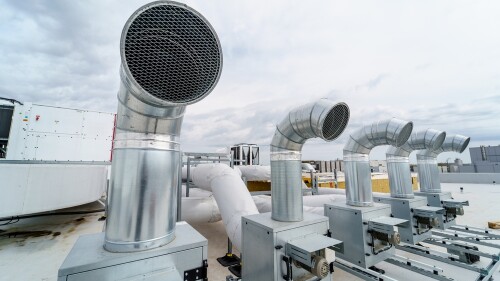Happy St. Patrick’s Day. One reaction to a recent post: an experienced commercial banker based on the East Coast echoed our concerns regarding current investment activities and underwriting practices. With permission, but not for attribution, we reprint his comment:
“Looks like spread compression is happening at an alarming pace. Risk is being underpriced because investors want yield and believe real estate is a safe bet. Deals are getting done because of cheap money in the face of weak economic growth. Market participants would do well to exercise some discipline before everything unravels again.”
More than once we have heard both individual as well as public and private institutional investors complain that there is nothing to buy and that pricing has gone beyond “perfection,” reaching the point where they feel certain that results will not come close to meeting their investment expectations.
Lenders are suffering similar feelings, noting that many of the sins of the recent past—pro forma underwriting, elevated loan-to-value ratios, and interest-only periods—are becoming visible in today’s highly competitive real estate lending environment. How can the return on a sub–5 percent, two-year interest-only, ten-year-term mortgage loan seem appropriately risk adjusted given the near certainty that the Federal Reserve will continue its tapering and interest rates will be markedly higher in the not-so-distant future?
Real Estate and Cicadas
A speaker at a recent institutional investor conference in Copenhagen remarked that the past three real estate downturns were all spaced 17 years apart—the same period it takes for cicadas to complete their life cycle. Set your countdown clocks: 2024 will be here before we know it.
Monday’s Numbers
The Trepp survey for the period ended March 7 showed spreads unchanged with the exception of office properties, where spreads widened as much as 8 basis points. The implied ten-year rate for properties with 50 to 59 percent loan-to-value ratios increased 5 basis points during the period to 4.23 percent.
Asking Spreads over U.S. Ten-Year Treasury Bonds in Basis Points | |||||||
12/31/09 | 12/31/10 | 12/31/11 | 12/31/12 | 12/31/13 | 3/7/14 | Month Earlier | |
| Office | 342 | 214 | 210 | 210 | 162 | 152 | 152 |
| Retail | 326 | 207 | 207 | 192 | 160 | 143 | 152 |
| Multifamily | 318 | 188 | 202 | 182 | 157 | 137 | 147 |
| Industrial | 333 | 201 | 205 | 191 | 159 | 140 | 149 |
| Average Spread | 330 | 203 | 205 | 194 | 160 | 143 | 150 |
| 10-year Treasury | 3.83% | 3.29% | 0.88% | 1.64% | 3.04% | 2.80% | 2.71% |
The most recent Cushman & Wakefield Equity, Debt, and Structured Finance Group’s monthly Capital Markets Update of commercial real estate mortgage spreads, dated March 5, showed spreads unchanged during the most recent survey period.
In its comment accompanying the survey, C&W noted the following:
- Floating-rates lenders—commercial mortgage–backed securities (CMBS), commercial banks, and public and private debt funds)—are becoming increasingly active. Floating-rate loans are often used to finance transition properties, allowing the borrower to prepay without penalty, upsize the loan based on increases in cash flow (and therefore property value), and pay for tenant and other capital improvements. Loans are priced at LIBOR plus a spread in the high 100s to 400s.
- Real Capital Analytic reported that U.S. real estate investment from China tripled last year while investment from Middle Eastern sources doubled.
- CMBS delinquencies decreased for the ninth-consecutive month. Trepp LLC noted that this is the first time the rate has been below 7.0 percent since February 2010. Today’s rate is 264 basis points below where it stood a year ago.
Ten-Year Fixed-Rate Commercial Real Estate Mortgages | |||
Property | Maximum loan-to-value | Class A | Class B |
| Multifamily (agency) | 75–80% | T +175 | T +180 |
| Multifamily (nonagency) | 70–75% | T +185 | T +195 |
| Anchored retail | 70–75% | T +205 | T +220 |
| Strip center | 65–70% | T +220 | T +235 |
| Distribution/warehouse | 65–70% | T +195 | T +210 |
| R&D/flex/industrial | 65–70% | T +210 | T +230 |
| Office | 65–75% | T +195 | T +215 |
| Full-service hotel | 55–65% | T +255 | T +280 |
| Debt-service-coverage ratio assumed to be greater than 1.35 to 1. | |||
Year-to-Date Public Equity Capital Markets
Dow Jones Industrial Average: –3.08%
Standard & Poor’s 500 Stock Index: –0.39%
NASD Composite Index (NASDAQ): +1.65%
Russell 2000: +1.53%
Morgan Stanley U.S. REIT Index: +5.57%
Year-to-Date Global CMBS Issuance | ||
2014 | 2013 | |
| U.S. | $14.6 | $20.5 |
| Non-U.S. | 0.2 | 2.2 |
| Total | $14.8 | $22.7 |
| Source: Commercial Mortgage Alert | ||
Year-to-Date Public U.S. Treasury Yields
U.S. Treasury Yields | |||
12/31/12 | 12/31/13 | 3/15/14 | |
| 3-month | 0.08% | 0.07% | 0.05% |
| 6-month | 0.12% | 0.10% | 0.08% |
| 2-year | 0.27% | 0.38% | 0.32% |
| 5-year | 0.76% | 1.75% | 1.46% |
| 7-year | 1.25% | 2.45% | 2.07% |
| 10-year | 1.86% | 3.04% | 2.60% |




